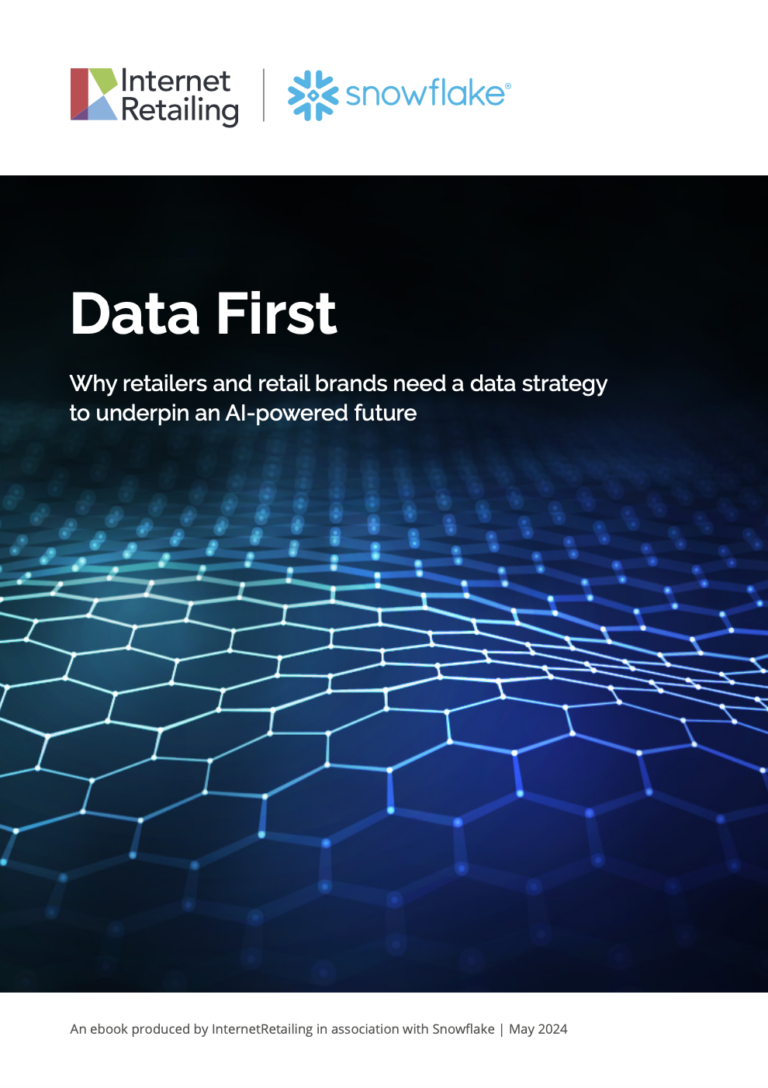
Ian Moore explains how digital brands can achieve omnichannel success
According to the KPMG Retail Sales Monitor, in-store retail is on the rise, despite online spending remaining high. In-store sales of non-food products grew by 5.3% in total over the three months to December, compared to a year earlier, and by 4.5% LFL.
It’s no surprise then, that we’ve seen a rise in major ecommerce brands exploring the physical shopping environment: last year Shein opened two successful pop-ups as it continues to expand its physical retail strategy; and eBay opened up a pop-up store for sneakerheads, to name a few.
However, this move doesn’t come without its challenges.
Inventory management and order fulfilment
Online brands may need to adapt their inventory management systems to account for the additional complexities of maintaining stock across multiple channels. This includes managing stock levels, tracking product movement, and ensuring accurate real-time inventory visibility across online and offline channels.
With the addition of physical stores, online brands need to consider how orders will be fulfilled efficiently. This involves determining whether orders will be shipped from centralised warehouses or fulfilled locally from stores, optimising the supply chain to support both online and offline sales, and integrating order management systems to handle the process seamlessly.
This is why adopting an Enterprise Resource Planning (ERP) system is really important – in fact, an effective ERP solution can be seen as a useful stepping stone for enabling online-first brands to navigate the physical retail world successfully. The right ERP system allows efficient inventory management, seamless and streamlined operations and synchronised data across online and offline channels. A unified stock management service allows brands to ensure the right stock is in the right stores, to optimise sales, particularly in peak retail periods.
An end-to-end POS focussed solution is also vital as it collects valuable data such as profit margins and sales trends. This will generate insight for retailers on the most engaging corner or product segment of their retail store.
Changing customer expectations
Online shopping offers convenience, personalisation, and seamless experiences. When transitioning to physical retail, online-first brands need to adapt to changing customer expectations. Customers who visit physical stores often expect a unique and engaging experience that complements the convenience of online shopping.
Online-first brands must understand how to replicate the elements that drive customer loyalty online while meeting the demands of in-store shoppers. This requires a deep understanding of customer preferences, preferences, and desires when interacting in a physical environment.
Today’s shoppers are taking a more hybrid shopping experience across online and in-store. The customer journey may have up to five engagements prior to making a purchase – for instance, see a product on TikTok, head to the website for more product details or view the range, visit the store to see the item in person and then go home to purchase with a student code via the app.
It’s vital for online-first brands to have the right tech in place to give them the best chance of a successful adoption of the physical retail approach. Those that are doing it well – for instance make-up brand Glossier – offer its in-store associates the same tech and devices that their customers have access to. This ensures they are empowered with the knowledge on the entire product range and can bring up existing customer details. This retail technique, known as clienteling, means that they can advise and effectively answer questions from even the most eco-conscious consumer.
Limited customer data integration
Online-first brands typically have access to extensive customer data gathered from their online platforms, such as browsing history, purchase patterns, and demographic information. However, integrating this data with the in-store shopping experience can be challenging. Collecting and analysing data from physical interactions, such as foot traffic, customer behaviour, and preferences, requires different tools and techniques. Bridging the gap between online and offline data sources is crucial for a comprehensive understanding of the customer base.
Online-first brands are accustomed to analysing customer behaviour based on digital data, including click-through rates, cart abandonment, and time spent on specific pages. However, tracking and analysing in-store customer behaviour presents different challenges. Understanding factors such as dwell time, product interaction, and the impact of visual merchandising requires advanced analytics tools, in-store sensors, or customer surveys. Collecting and interpreting accurate data about in-store customer behaviour is essential for making informed decisions, optimising store layouts, and delivering personalised experiences.
There are two key approaches to getting the best understanding of in-store customers, their expectations and preferences. The first, is using in-store tech to provide insights on the store’s browsers and buyers. Such strategies for gathering data in-store could include using proximity marketing tools, such as video-edged CCTV and sensors to collect customer information. This works on customer devices within range of the specified store location, receiving a permission-based personalised communication which entices them into the store to consider a product or offer via the retailer’s app. This personalised message with text, audio or even video – can bring the offer to life. Brands know who’s shopping and can more easily target consumers with money-saving deals, or highlight a new product range.
The second is using market research to assist retailers in locating new trends, and to use customer surveys and feedback documents to get insightful quantitative information. This can indicate to retailers what products will sell best in which stores and identify opportunities to cross and up-sell to customers.
Unlocking omnichannel success
Successfully understanding the customer base in the physical retail environment requires online-first brands to bridge the gap between online and offline data, adapt to changing customer expectations, and effectively analyse in-store customer journeys. By overcoming these challenges, brands can gain valuable insights to enhance their strategies and deliver a seamless omnichannel experience.
Author
Ian Moore is founder of Excellent Zephyr










